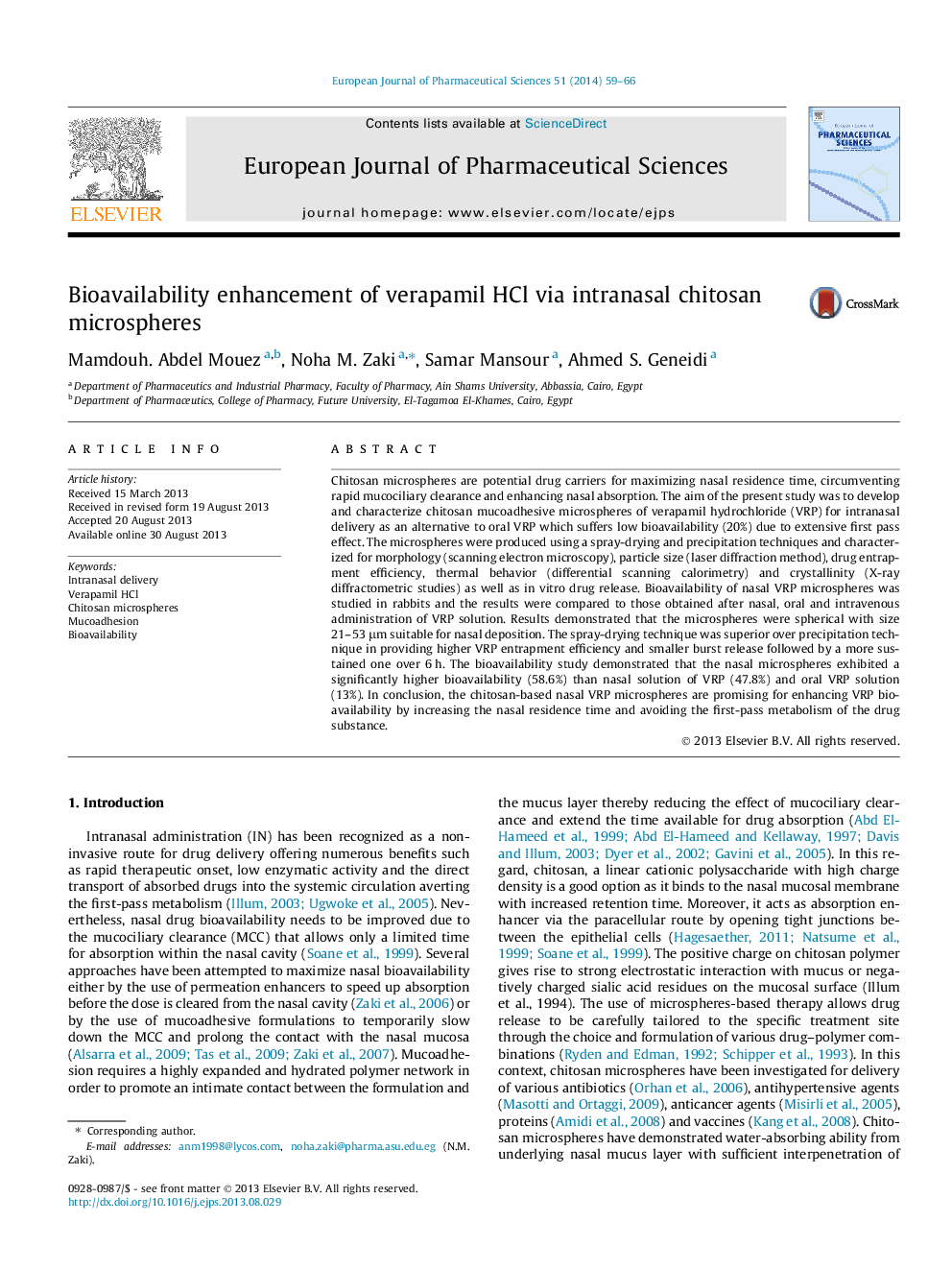| Article ID | Journal | Published Year | Pages | File Type |
|---|---|---|---|---|
| 2480624 | European Journal of Pharmaceutical Sciences | 2014 | 8 Pages |
Chitosan microspheres are potential drug carriers for maximizing nasal residence time, circumventing rapid mucociliary clearance and enhancing nasal absorption. The aim of the present study was to develop and characterize chitosan mucoadhesive microspheres of verapamil hydrochloride (VRP) for intranasal delivery as an alternative to oral VRP which suffers low bioavailability (20%) due to extensive first pass effect. The microspheres were produced using a spray-drying and precipitation techniques and characterized for morphology (scanning electron microscopy), particle size (laser diffraction method), drug entrapment efficiency, thermal behavior (differential scanning calorimetry) and crystallinity (X-ray diffractometric studies) as well as in vitro drug release. Bioavailability of nasal VRP microspheres was studied in rabbits and the results were compared to those obtained after nasal, oral and intravenous administration of VRP solution. Results demonstrated that the microspheres were spherical with size 21–53 μm suitable for nasal deposition. The spray-drying technique was superior over precipitation technique in providing higher VRP entrapment efficiency and smaller burst release followed by a more sustained one over 6 h. The bioavailability study demonstrated that the nasal microspheres exhibited a significantly higher bioavailability (58.6%) than nasal solution of VRP (47.8%) and oral VRP solution (13%). In conclusion, the chitosan-based nasal VRP microspheres are promising for enhancing VRP bioavailability by increasing the nasal residence time and avoiding the first-pass metabolism of the drug substance.
Graphical abstractFigure optionsDownload full-size imageDownload high-quality image (60 K)Download as PowerPoint slide
